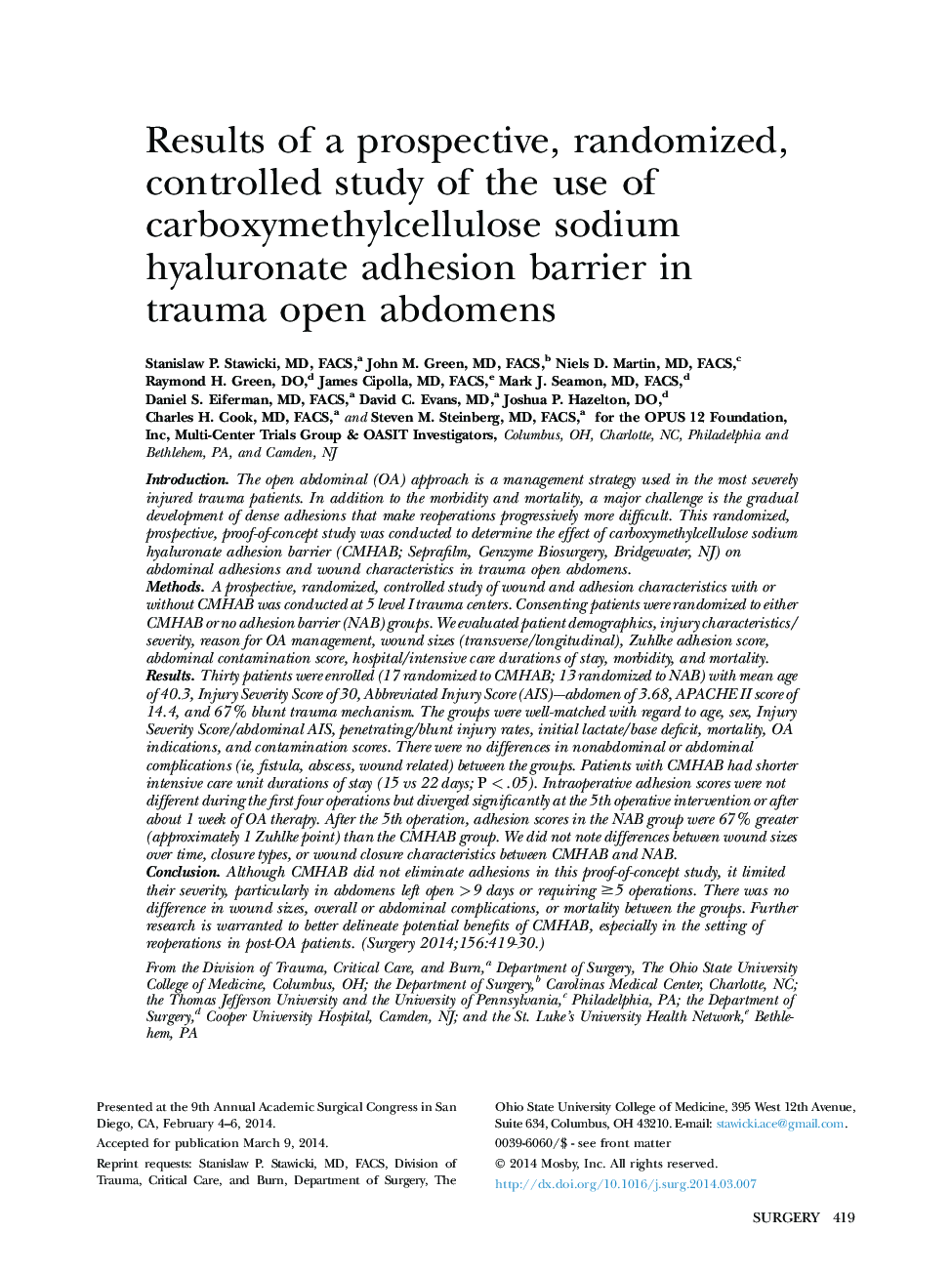| Article ID | Journal | Published Year | Pages | File Type |
|---|---|---|---|---|
| 6255705 | Surgery | 2014 | 12 Pages |
IntroductionThe open abdominal (OA) approach is a management strategy used in the most severely injured trauma patients. In addition to the morbidity and mortality, a major challenge is the gradual development of dense adhesions that make reoperations progressively more difficult. This randomized, prospective, proof-of-concept study was conducted to determine the effect of carboxymethylcellulose sodium hyaluronate adhesion barrier (CMHAB; Seprafilm, Genzyme Biosurgery, Bridgewater, NJ) on abdominal adhesions and wound characteristics in trauma open abdomens.MethodsA prospective, randomized, controlled study of wound and adhesion characteristics with or without CMHAB was conducted at 5 level I trauma centers. Consenting patients were randomized to either CMHAB or no adhesion barrier (NAB) groups. We evaluated patient demographics, injury characteristics/severity, reason for OA management, wound sizes (transverse/longitudinal), Zuhlke adhesion score, abdominal contamination score, hospital/intensive care durations of stay, morbidity, and mortality.ResultsThirty patients were enrolled (17 randomized to CMHAB; 13 randomized to NAB) with mean age of 40.3, Injury Severity Score of 30, Abbreviated Injury Score (AIS)-abdomen of 3.68, APACHE II score of 14.4, and 67% blunt trauma mechanism. The groups were well-matched with regard to age, sex, Injury Severity Score/abdominal AIS, penetrating/blunt injury rates, initial lactate/base deficit, mortality, OA indications, and contamination scores. There were no differences in nonabdominal or abdominal complications (ie, fistula, abscess, wound related) between the groups. Patients with CMHAB had shorter intensive care unit durations of stay (15 vs 22 days; P < .05). Intraoperative adhesion scores were not different during the first four operations but diverged significantly at the 5th operative intervention or after about 1 week of OA therapy. After the 5th operation, adhesion scores in the NAB group were 67% greater (approximately 1 Zuhlke point) than the CMHAB group. We did not note differences between wound sizes over time, closure types, or wound closure characteristics between CMHAB and NAB.ConclusionAlthough CMHAB did not eliminate adhesions in this proof-of-concept study, it limited their severity, particularly in abdomens left open >9 days or requiring â¥5 operations. There was no difference in wound sizes, overall or abdominal complications, or mortality between the groups. Further research is warranted to better delineate potential benefits of CMHAB, especially in the setting of reoperations in post-OA patients.
